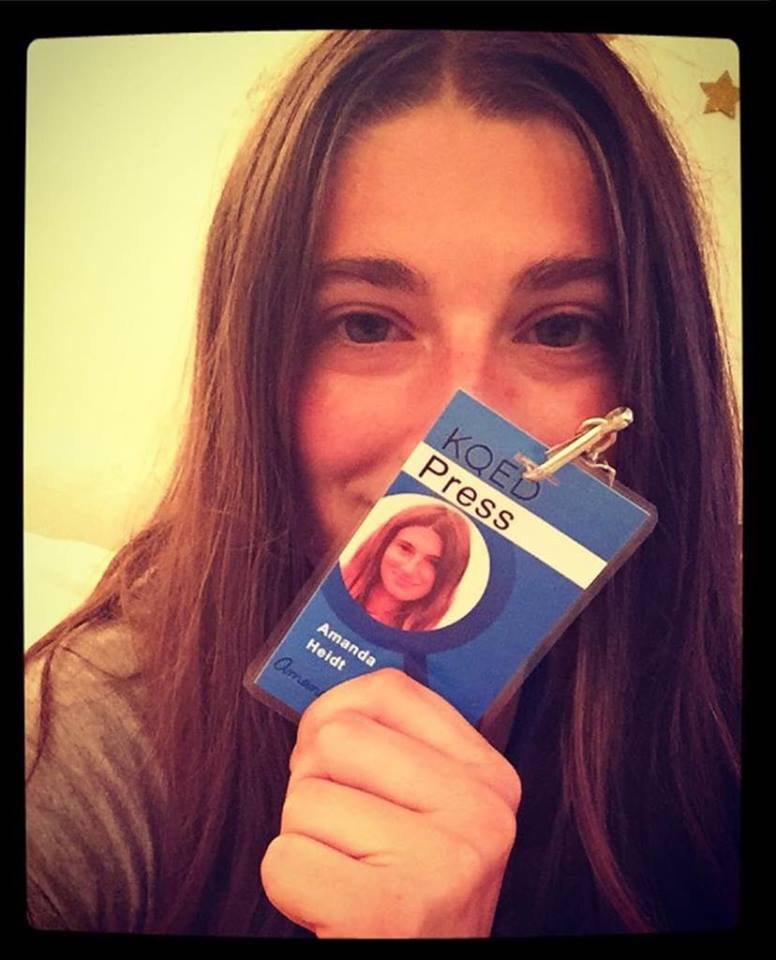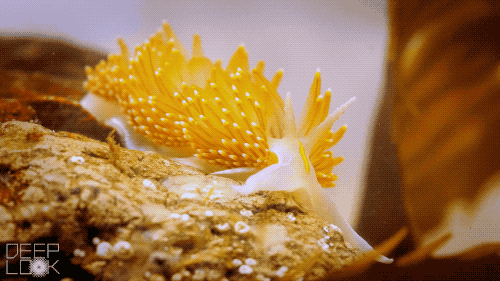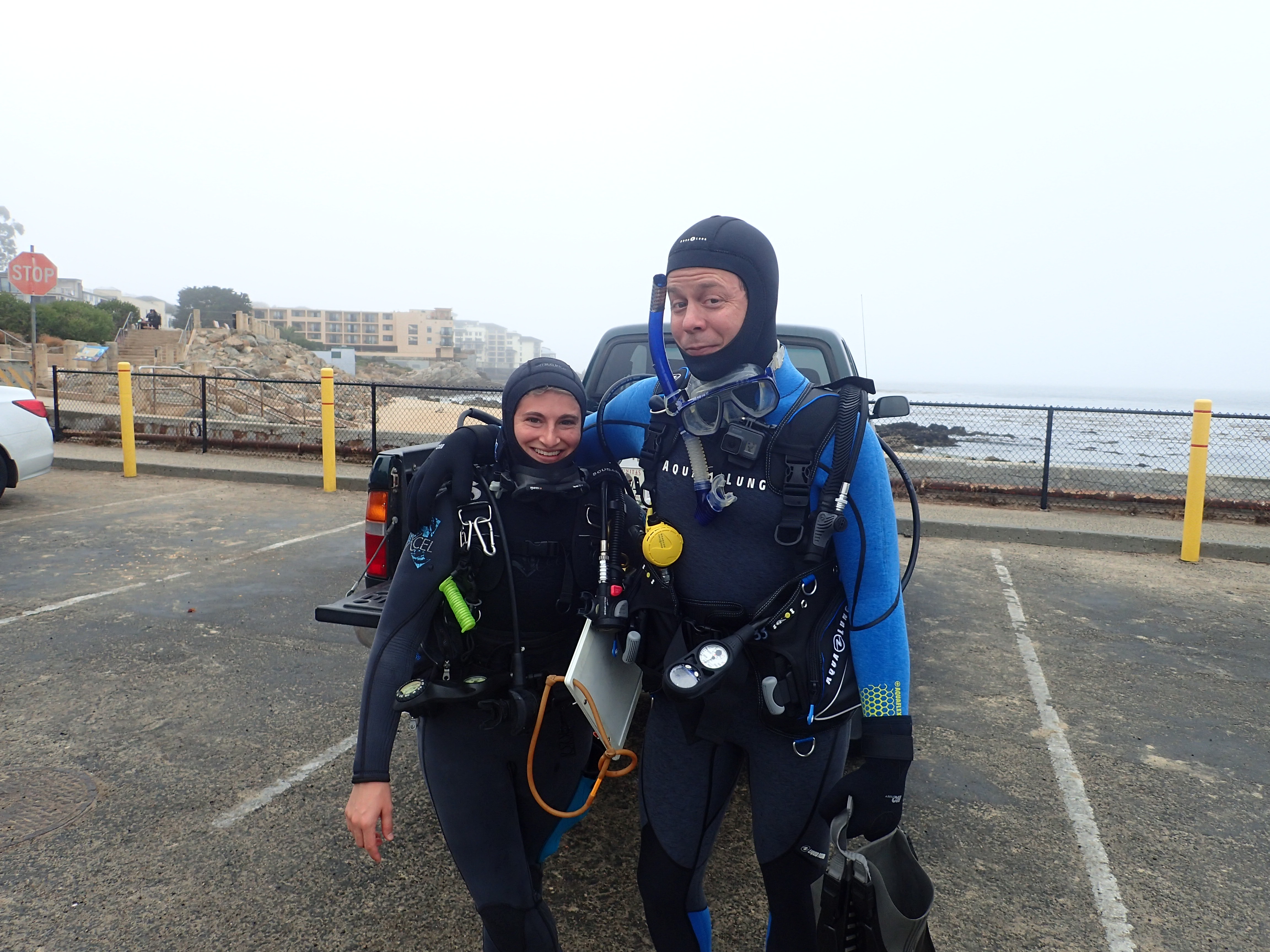By Amanda Heidt, Invertebrate Zoology & Molecular Ecology Lab
 Amanda Heidt was recently selected as the 2018 KQED-CSUMB Fuhs Science Communication Fellow. The Fuhs Family Foundation provided funding for a one year $10,000 scholarship and a paid summer internship at KQED Public Media in San Francisco. She spent the summer living in the city, navigating the BART, and making a map of all the food she needed to eat. At work, she split her time between covering stories for Science News and researching story lines for the popular 4k Youtube video series Deep Look.
Amanda Heidt was recently selected as the 2018 KQED-CSUMB Fuhs Science Communication Fellow. The Fuhs Family Foundation provided funding for a one year $10,000 scholarship and a paid summer internship at KQED Public Media in San Francisco. She spent the summer living in the city, navigating the BART, and making a map of all the food she needed to eat. At work, she split her time between covering stories for Science News and researching story lines for the popular 4k Youtube video series Deep Look.
She recently returned back to the lab and caught us up on what she learned from her crash course in science communication. You can also skip forward here to see her KQED portfolio.
________________________________________________
(Am I dating myself by referencing a movie from the 1930s in the title? Maybe. But don't worry, I'm also hip to the #scicomm lingo.)
I applied for this fellowship on a whim, because the application was only 250 words and the scholarship would be enough to cover the rest of my research costs. Like many people, I think science communication is important, but actually doing it can be completely overwhelming.
But surprisingly, as I cleared the various hurdles they set for applicants, I started to get more excited at the thought of really going for it. I had to summarize a dense scientific paper in 250 words. That was hard. I had to interview with my would-be bosses. Always a nail-biter. And immediately after that, I had to go blind into a two-hour writing test, the details of which I am barred from explaining. It was challenging, but it gave a taste of what it is like to have a quick turn-around on a story.
And I did have some quick turnarounds. My summer fellowship fell right in the middle of an intense fire season in California. As a result, much of my coverage revolved around covering stories related to fires. In these cases, I would be called into my editors office and assigned a particular angle to investigate. For example, the County Fire early on in the summer closed Lake Berryessa businesses during the 4th of July, one of the busiest weekends on the lake. I had three hours in which to find people to interview, call them, transcribe the interviews, write the draft, and go through edits.

But there were other pieces -- longer and more personal -- that took weeks. I was able to be thoughtful in who I chose to speak with, targeted in the questions I put to them, and a bit more lyrical in the way I spun the narrative. I drew from past professional relationships to get at different perspectives. With Deep Look episodes, I formed ongoing relationships with researchers as I came back to them with more questions -- always more questions. While I enjoyed the challenge of a tight deadline, it was clear to me that I was drawn more to the deep dive into a particular story. Maybe I should have guessed as much; my podcast and book choices tend to skew long-term, in-depth journalism.
I think what surprised me most about the fellowship was the diversity of tools in the science communication toolbelt. It isn't just writing. Or even one type of writing. There is, for example, a huge difference between writing a feature piece and drafting a script for a Deep Look episode. A traditional article would largely be a conversation between myself and my editor, but a scripting session was a group affair, with a half-dozen people crammed into a cubicle slashing at a word document as yet another person leaned over to comment from the desk next door.
And beyond the writing, I learned how to photograph and film, how to edit video, how to conduct interviews in-person or over the phone, how to put together a podcast, and how to record a piece for radio. I took photos of people taking photos (it was very meta). I dove with our videographer so we could see where the wild things really were. I wore slacks and a nice blazer to meet a scientist at California Academia of Sciences and then went directly to the beach and soaked myself to get a perfect opening shot.
I loved that there were so many avenues to get the word out. It was fun for me to get to learn about new things, to be a journalistic chameleon for a time. A news story is meant to be factual and timely, while a Deep Look episode is silly and surprising. The immediate gratification of publishing several news stories during my ten weeks is different to the slow-burn of Deep Look releases. My first episode credit released on my last day. They each pull at very different creative threads.
Science communication came to me slowly. Even five years ago, I would never have thought to do anything like this. But similar to the way I think everyone should know the basics of computer coding, I think everyone should have an understanding of how to put words to a page. It's not really so revolutionary a thought; all through school we are expected to learn math, science, literature, history, art. It's only really in college that we move away from what does not come naturally to us.
People invest in what they care about. This, to me, is at the heart of why it behooves all scientists to take communicating their work seriously. Set aside that it can be fun to bring the wonder of discovery to fresh eyes, and you're still left with the fact that we need the broader public behind us to drive forward with our work.

Coming back to the lab, I feel invigorated. And I especially feel affection for this blog, this space that was really my only exposure to writing about science for a wide audience that I had for a long time. Blogging as a legitimate means of sharing information has really only come about in the last decade or so, and I think they retain some of their image as a renegade platform where the words can be yours and yours alone. I am excited, and I hope others are to, to explore the benefits of this creative space. As Erin reiterated in last week's post, this blog has always been for the students, by the students.
Below I've linked to all of my pieces. The application for the next Fuhs Fellow recently opened and will be due in February 2019. I highly encourage any CSUMB-affiliated student to apply. It is intense, but it's also a great way to really jump in to science communication with good oversight and resources. Feel free to email me with any questions.
County Fire Burns Through Many Lake Berryessa Holiday Plans (July 3, 2018)
A Sea Urchin Army Is Mowing Down California's Kelp Forests -- But Why? (July 19, 2018)
California Prison Inmates Battle Fires (July 30, 2018)
Redding Medical Staff Scrambling to Provide Care (August 1, 2018)
Bird Species Collapse in the Mojave, Driven by Climate Change (August 15, 2018)
This Adorable Sea Slug Is a Sneaky Little Thief (August 28, 2018)
California’s Plan to Store Water Underground Could Risk Contamination (September 19, 2018)
A Sand Dollar's Breakfast Is Totally Metal (October 9, 2018)
Sand Dollar Behind the Scenes (October 9, 2018)

